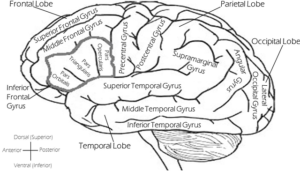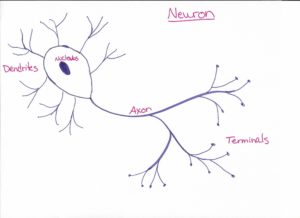Makes You Who You Are [Show Notes]

**Many apologies for the screaming baby***
Basics
Frontal Lobe – in the front of the brain (behind your forehead)
This is the area that contains your personality. A stroke or brain injury or damage can alter someone’s personality drastically.
We take personality tests, but they are too basic to take such a complex part of you and put it in a quadrant or on a spectrum.
This area of the brain is also well-connected to the limbic system (emotional center), and if those connections are broken through stroke or injury, then that causes personality changes too.
Frontal Lobe
- Motor cortex: voluntary muscle movements = how you choose to move your body.
- Prefrontal cortex: personality, complex cognitive behavior, decision-making, social behavior, judgment (not existential judgement – but simple things like opposites) – if this gets damaged in adults (so less chance to relearn things as kids would), they don’t sense the dread of the consequences of doing “bad” behaviors, thus they can live lifestyles that include sex, drugs, and crime.
- Broca’s area (confirmed: he was French): speech, language production, translation (not just audible language, but any type of symbol or gesture that would have meaning)
- stuttering and aphasia originate here
* This area of the brain doesn’t reach full development until almost 30 years old —> Insert rant here!!
Story Time
During the Heroic Era of medicine (not a well-named era) – they invented the Lobotomy – mainly trying to find a treatment for mental illnesses. Society was ok with doctors experimenting on criminals in prison and patients who were put in asylums by their families. It did cause changes in the people, thus they claimed the “cured” them.
Connect with me
Support us on Patreon
*NEW* Join the Pharmacist Answers Podcast Community on Facebook
Subscribe: iTunes, Stitcher, GooglePlay, TuneIn Radio
Music Credits: “Radio Martini” Kevin MacLeod (incompetech.com) Licensed under Creative Commons: By Attribution 3.0 http://creativecommons.org/licenses/by/3.0/



